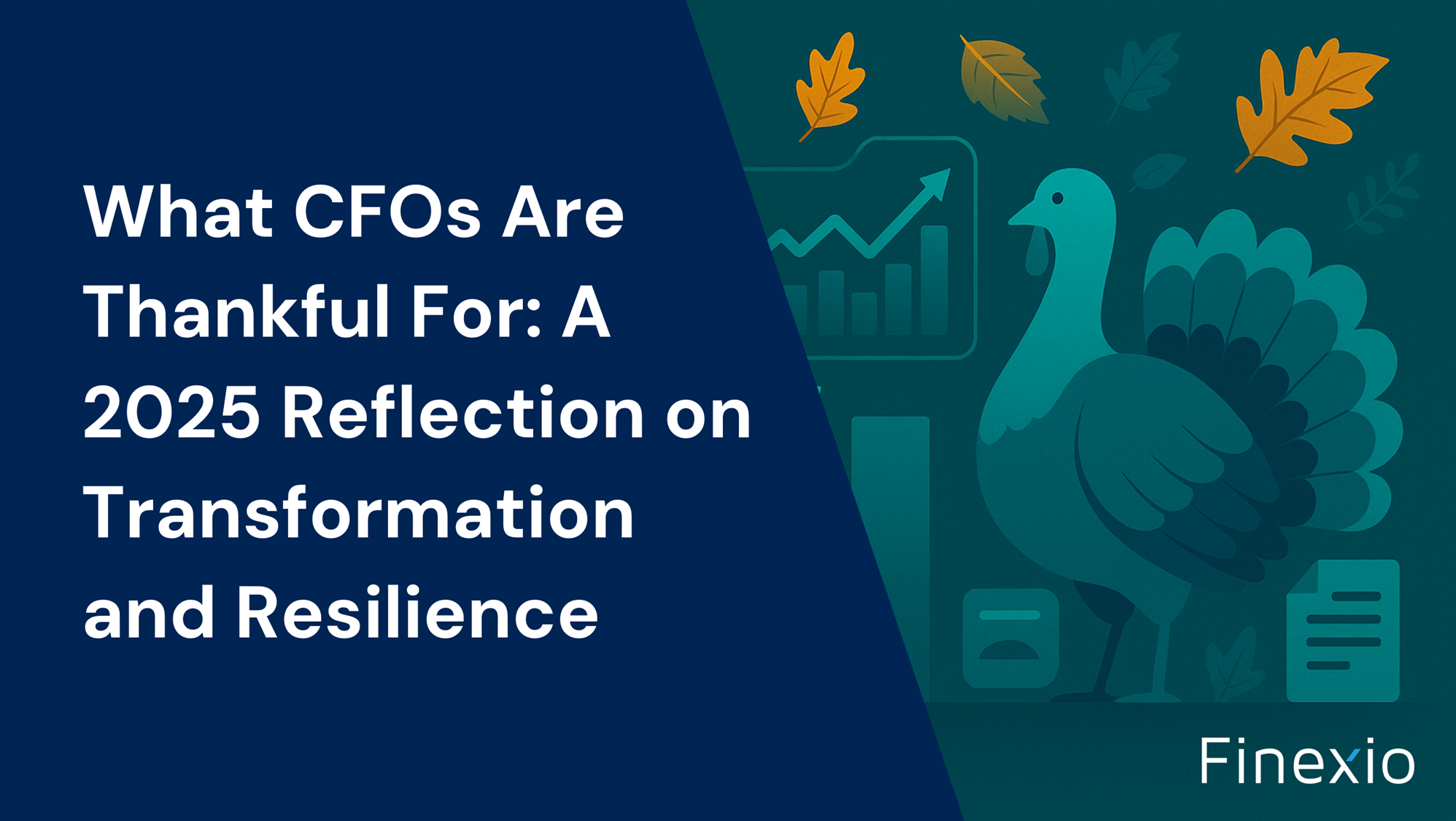The Clear Choice for Modern AP: Why Finexio Outperforms Legacy Payment Providers


When evaluating B2B payment partners, businesses face a fundamental choice between legacy software providers and modern, service-oriented platforms.
While both promise payment automation, their core architecture, operational models, and security philosophies couldn't be more different. For businesses seeking true efficiency and security, understanding these differences is critical.
This analysis directly compares Finexio with traditional providers like Bottomline Technologies to demonstrate why modern approaches deliver superior results for today's businesses.
The Foundation: Modern Architecture vs. Legacy Patchwork
A platform's effectiveness begins with its architecture. Finexio was built from the ground up as a single, unified, API-first platform. This modern, cloud-native design ensures seamless user experience, maximum agility, and effortless integration with your existing systems.
In contrast, Bottomline has grown through decades of acquisitions, including companies like Nexus Systems. This strategy has created a patchwork of disparate systems held together by complex middleware. To manage this complexity, Bottomline relies on private cloud infrastructure to create what they call a "streamlined operational framework"—essentially a translation layer between systems that were never designed to work together.
Finexio's unified platform means consistent user experience, single sign-on, and updates that deploy seamlessly without disruption. Bottomline's multi-system reality means different interfaces for different functions, multiple logins, and carefully orchestrated updates that require downtime and testing across their ecosystem.
The Service Model: Eliminating Work vs. Creating New Burdens
The most significant difference between Finexio and legacy providers lies not in technology but in fundamental service philosophy. This divide determines whether payment automation reduces your workload or simply reshapes it.
Finexio provides a true managed service designed to eliminate work from your AP team. When you approve an invoice for payment, your involvement ends. We handle everything that follows—payment execution, optimization across payment methods, exception resolution, and all supplier communications. Our dedicated operations team investigates and resolves issues without involving your staff. Suppliers contact us directly, not your AP department.
The impact is transformative. Our customers report an 84% reduction in time spent on payment-related tasks. AP teams that once dedicated entire roles to payment processing now focus on strategic initiatives like spend analysis and vendor negotiations.
Bottomline represents the traditional toolkit approach. They provide what they call a "comprehensive payment automation suite," which sounds impressive until you understand what this means in practice. When payments fail, their Exception Management Console gives you a sophisticated dashboard showing exactly what went wrong. The critical distinction? Fixing these problems remains entirely your responsibility.
This creates what we call the "Process Tax" the hidden cost in time and resources your team must pay to manage payment operations. Consider what happens when a payment fails in Bottomline's system: your team must notice the alert, investigate the issue, contact the supplier, resolve the problem, and update the system. This isn't automation; it's delegation of problems to your team.
The burden compounds as your business grows. With Finexio's managed service, increased payment volume requires no additional effort from your team, we handle the scale. With Bottomline's toolkit approach, growth means more exceptions to manage, more supplier inquiries to field, and ultimately more staff required to handle the increasing burden.
Security Philosophy: Protection by Design vs. Reactive Defense
In an era where payment fraud has reached crisis proportions, security architecture isn't just a technical consideration, it's an existential business concern. Here, the contrast between modern and legacy approaches becomes stark.
Finexio was built with "Security by Design" philosophy that transfers risk away from our clients. During onboarding, banking credentials are immediately encrypted and tokenized within our PCI Level 1 compliant environment. These tokens—meaningless strings that can only be decoded within our secure vault—eliminate the need to handle sensitive data in routine operations.
Most importantly, Finexio assumes complete liability for payment security through our Finexio Shield program, backed by a $1 million fraud protection guarantee. If a payment is compromised despite our security measures, Finexio bears the financial responsibility, not you. This isn't a vague promise, it's concrete risk transfer that lets you process payments with complete confidence.
Bottomline's legacy architecture reflects the constraints of systems designed before modern security standards. Their file-based approach requires sensitive banking information to be included in payment instructions, transmitted across networks, and processed by multiple systems. Each transmission and storage point represents a potential vulnerability. Most concerning: you retain complete liability for any breaches or fraud that occur.
Bottomline's response to these architectural vulnerabilities is telling. Rather than fundamentally reimagining their security model, they've built a secondary business selling additional fraud detection and case management tools. In essence, they profit from selling you bandages for wounds their own system creates.
The Financial Reality: Revenue Generation vs. Perpetual Cost
The economic implications of choosing between Finexio and legacy providers extend far beyond software licensing fees. Finexio transforms AP from a cost center into a revenue generator, while traditional providers perpetuate the cycle of ever-increasing expenses.
With Finexio, virtual card adoption typically generates rebates of 1.5% to 2.5% on converted spend. For a mid-sized company processing $50 million annually, this translates to $500,000 or more in annual revenue flowing directly to your bottom line. Add the savings from eliminating paper checks ($4-10 per payment) and reducing staff time by 84%, and the economic advantage becomes overwhelming.
Bottomline's cost structure reflects the traditional enterprise software model where the initial license fee is just the beginning. Implementation requires expensive consultants. Training programs must be funded. Annual maintenance fees accumulate. When you need better fraud detection or enhanced reporting, that's another module with additional licensing. What starts as a competitive quote evolves into a complex web of expenses that can easily exceed seven figures over five years.
The hidden costs prove even more burdensome. Organizations using traditional payment automation still dedicate 2-3 full-time employees to payment processing and exception management. At a fully loaded cost of $75,000 per employee, this represents $150,000 to $225,000 in annual expense that could be eliminated with a true managed service.
The Clear Choice for Modern Business
The comparison between Finexio and legacy providers like Bottomline ultimately transcends features and pricing. It represents a fundamental choice about how technology should serve your business.
Bottomline embodies the traditional approach—powerful tools that require significant investment, extensive training, and ongoing management to deliver value. Their acquisition-driven growth has created a complex ecosystem that demands continuous attention and resources from your team.
Finexio represents a different vision—one where technology serves business outcomes without creating new burdens. Our managed service model means you achieve the benefits of payment automation without the traditional costs in time, resources, and risk. Modern architecture delivers reliability and security without complexity. Most importantly, our assumption of operational responsibility means your team focuses on strategic initiatives rather than managing payment tools.
For CFOs and AP leaders seeking genuine transformation, the choice is clear. Legacy providers will continue serving organizations willing to accept complexity, risk, and operational burden as the price of automation. But for businesses ready to embrace the future—where payments happen seamlessly, suppliers are satisfied, fraud is prevented, and AP generates revenue—Finexio stands ready as your partner.
The transformation of accounts payable from cost center to strategic asset isn't a distant vision. It's happening today at hundreds of organizations that have chosen modern payment automation over legacy complexity. The only question remaining is whether your organization will join them in embracing the future of payments, or remain constrained by the limitations of the past.
The path forward is clear.
Get the free Newsletter
Get the latest information on all things related to B2B and electronic payments delivered straight to your inbox.




